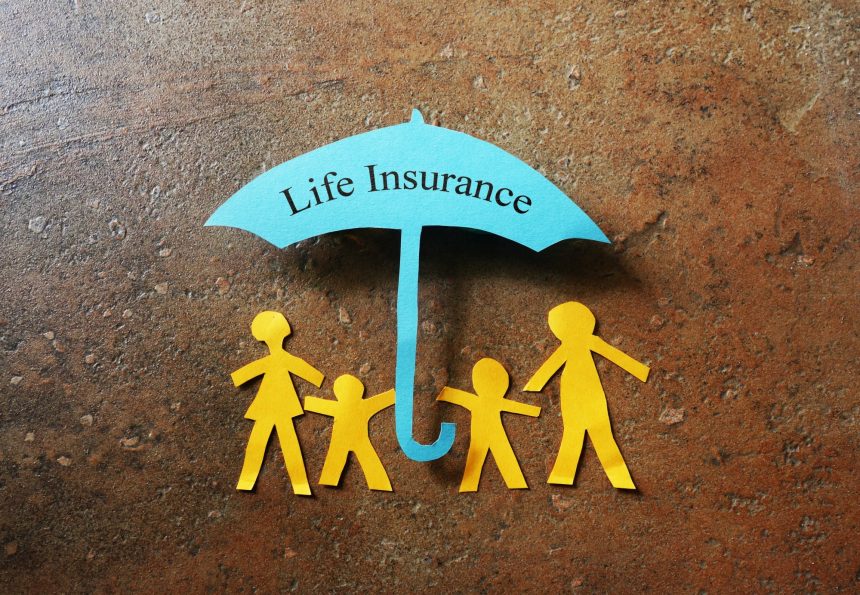As long as we’re living, we should have life insurance to ease the burden of financial shocks.
It’s so popular that more than 54% of American adults are already covered by some type of life insurance.
However, if you’re looking into your different options for the best type of life insurance, things can seem rather complex and confusing. If you’ve been searching for the right type of life insurance to best fit your needs, then no worries. You’ve come to the right place.
Keep on reading for our full breakdown of all things life insurance plans and policies. We’ll also take a quick look at why even bother looking for life insurance in the first place.
The Best Type of Life Insurance: Why Even Bother?
Before we start our deep dive into the intricacies of the different types of insurance policies, let’s make sure you know why you should be doing this exercise.
In the simplest of terms, the purpose of a life insurance policy is to give your family a modicum of financial protection and stability, specifically in case of your untimely death.
It’s a plan that will provide your family and loved ones with a guaranteed income, which can be used for a variety of causes, like covering their basic living expenses.
Let’s see the different benefits that a well-chosen life insurance policy can grant you.
Covers Your Death Costs
In the U.S., it can be rather expensive to die. With the average cost of a funeral ranging between $7,000 and $12,000, it’s going to be a financial burden, to say the least.
Depending on what you state in your will, and the life insurance stipulations that you choose, your life insurance can help pay for all of your death costs.
Those can include more than just funeral expenses. The payments can cover remaining student debt, medical bills, estate taxes, or any lingering unfinished financial business.
Pays for Living Expenses
Whether you’re the main breadwinner for your family, or your income only encompasses half of your home’s living costs, in your absence, there will be a dire need for something that can replace that lost income.
At least, for a set amount of time, until your family can figure out other avenues of income.
In addition, if you have dependent children, your life insurance can help your chosen guardian pay for all the expenses related to raising your kids.
This sum can cover their medical costs, living expenses, as well as their tuition for college.
Donating Money to the Right Causes
Your life insurance payments can be set up depending on your preferences. For instance, the funds don’t have to go to a single person or entity.
Similar to choosing to leave your inheritance to the people you love, who may or may not be biologically related to you. Your life insurance can be divided up however you want.
If you’d prefer for the many to be donated to a charity, you can set that up.
Boost Your Wealth
Your life insurance doesn’t have to be completely useless until the policyholder passes away. You can actually use your life insurance policy as an investment option.
It’ll help you build and transfer wealth, as well as take advantage of certain tax breaks that apply to your beneficiary.
You’ll be delighted to know that carrying life insurance comes with many different tax-free perks.
Secure Different Types of Debt
Having a life insurance policy on hand can be useful when you’re applying for certain kinds of debt.
For example, when it comes to mortgages, your lender can use your life insurance plan as collateral or security.
The Types of Life Insurance Plans
At this point, we’ve covered why you should be researching and getting the right life insurance policy for your needs. Now, it’s time to explore the two overarching categories of life insurance.
Of course, you might be able to get rather specialized life insurance policies. However, the main majority of life insurance plans are either term life insurance or they’re whole life insurance.
Term Life Insurance
Generally speaking, your term life insurance is a time-sensitive contract. It holds an agreement between the insurance company and the policyholder to pay a death benefit if the insured person passes away within the specified “term” or time period of the policy.
If you’re in the market for term life insurance, there are only two factors you need to keep in mind. You’ll need to set how long the term should cover, and the payout amount.
Once the insured person outlives the length of the policy, deciding to not renew the term, the policy will be considered expired.
Without “death” there will be no death benefits, so you won’t be able to get a refund for what you’ve paid in.
However, you can select a policy type known as premium term life insurance, which can grant you (at least) a portion of the funds you’ve sunk into the policy.
Whole Life Insurance
On the other end of the life insurance spectrum, you get the whole life insurance.
This is a life policy that’s made of two separate elements. There are the death benefits, similar to the term life insurance, and there’s also a savings portion, which is called the “cash value.”
Whole life insurance will focus on the savings factor, by allowing interest to accumulate, specifically on a tax-deferred basis.
Growing wealth while the insured person lives are the key difference between the two policy types. The cash value can grant the beneficiaries dividend, as well as interest earned on the policy savings.
Ready to Get the Right Life Insurance for You?
Thinking about death and financial constraints isn’t a pleasant mental exercise.
Yet, any responsible person with dependents will tell you that for all of the mental blocks that stand between your way and getting the best type of life insurance policy, once you have it, you won’t regret it.
We hope that our explainer has shed some light on the different types of life insurance policies on the market, and why you should be getting one.
If you liked our article, make sure to check out more tips and advice in our finance section.













